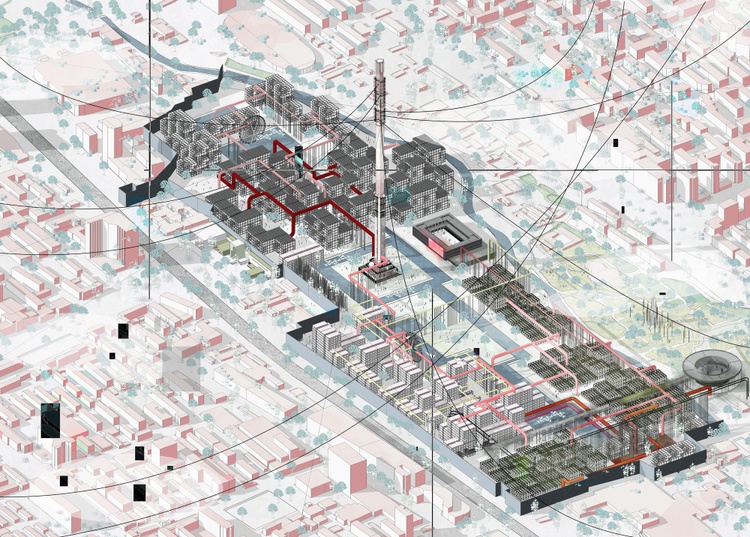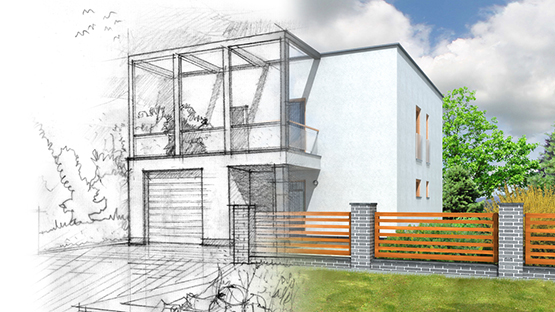Leading Reasons to Pick CDA Architects for Your Residential or Commercial Styles
Leading Reasons to Pick CDA Architects for Your Residential or Commercial Styles
Blog Article
The Influence of Technical Improvements on the Style Practices of Contemporary Architects
The rapid advancement of technological devices has actually substantially improved the style landscape for contemporary designers, cultivating unprecedented degrees of technology and sustainability. The combination of Structure Info Modeling (BIM), parametric design, and expert system has not only streamlined cooperation amongst varied teams but likewise redefined task execution. As designers accept these advancements, they are faced with complex obstacles that might affect their innovative procedures. Checking out these dynamics discloses a nuanced interaction in between innovation and standard layout techniques, prompting a better evaluation of what the future holds for architectural methods.
Evolution of Architectural Tools
How have architectural tools transformed the design and construction procedures over the centuries? The advancement of building devices has significantly impacted the performance, precision, and imagination of design and building.
With the development of the Renaissance, the intro of the compass and the protractor noted a critical change. These devices made it possible for engineers to achieve better precision in their layouts, facilitating the development of even more detailed and in proportion structures. The Industrial Revolution additionally transformed architectural experiment the introduction of mechanized tools and materials, allowing for bigger and extra ambitious projects.
In the 20th century, the growth of computer-aided design (CAD) software application transformed the landscape when again, providing engineers with unprecedented capacities in modeling and visualization. Today, advanced tools such as Structure Information Modeling (BIM) and parametric design software continue to press the limits of architectural innovation, making it possible for an extra integrated technique to layout and building processes.
Improved Partnership in Design
As technology continues to progress, improved collaboration in layout has come to be a foundation of modern building practice. The assimilation of electronic devices such as Building Details Modeling (BIM), cloud-based systems, and advanced visualization software program has actually changed the way engineers, engineers, and stakeholders communicate throughout the style process. These devices facilitate real-time interaction, enabling groups to share ideas, modifications, and responses instantly, despite geographical area.

In addition, interdisciplinary cooperation has actually been streamlined with these technological improvements, enabling architects to work more carefully with other experts, such as city organizers and environmental consultants. The outcome is a more cohesive technique to create that considers numerous viewpoints and knowledge. Inevitably, boosted partnership in design is not simply a pattern; it is essential for producing ingenious, practical, and cosmetically pleasing architecture in a significantly intricate world.
Sustainability Through Innovation
Sustainability in architecture has actually progressively come to be linked with technological technology, driving the industry towards environmentally responsible practices - cda architects. Contemporary designers are leveraging innovative technologies to reduce ecological impact while boosting the performance of buildings. One noticeable instance is using Structure Information Modeling (BIM), which enables for precise planning and source appropriation, minimizing waste throughout building and construction and advertising power efficiency throughout a check these guys out structure's lifecycle
In addition, smart materials and energy-efficient systems are being incorporated right into styles to maximize source usage. Technologies such as photovoltaic or pv cells and environment-friendly roof systems harness eco-friendly power sources, adding to decreased carbon footprints. Additionally, the application of expert system in style procedures enables designers to mimic and assess power usage, leading decisions toward even more lasting results.
The combination of lasting innovations not only straightens with international environmental objectives however also fulfills a raising need from customers for green options. As designers welcome these developments, the focus moves in the direction of creating areas that are not only visually pleasing however also functionally sustainable, consequently redefining the criteria of modern-day architecture. This way, modern technology acts as a driver for sustainability, making it possible for designers to develop buildings that respect and enhance the natural atmosphere.
Obstacles in Execution
While technical innovations in style hold great assurance for boosting sustainability, their application typically encounters substantial obstacles - cda architects. One main challenge is the steep understanding contour connected with new innovations. Architects and building and construction experts might require considerable training to efficiently make use of innovative software and devices, which can postpone job timelines and raise costs
Additionally, the assimilation of arising innovations, such as Building Details Modeling (BIM) and lasting products, typically requires collaboration across multidisciplinary teams. This cooperation can be hindered by differences in competence, process, and communication styles, causing possible disputes and ineffectiveness.
Financial constraints further complicate the fostering of cutting-edge innovations. Many architectural companies, specifically smaller sized ones, may lack the sources to buy advanced devices, restricting their capability to compete with bigger he said companies that can pay for such financial investments.
Moreover, regulative structures and building codes might not maintain rate with technological developments, producing obscurity and potential compliance problems. This difficulty can discourage designers from totally embracing new innovations, as the danger of non-compliance may outweigh the benefits. Therefore, addressing these application difficulties is important for the effective integration of technological improvements in contemporary architectural techniques.
Future Trends in Design
The obstacles connected with the application of brand-new technologies in design have prompted a reevaluation of future fads within the market. As architects navigate issues such as sustainability, urbanization, and social equity, they are increasingly embracing innovative technologies to boost design effectiveness and environmental efficiency.
One popular trend is the integration of artificial intelligence (AI) in the layout process. AI devices can evaluate substantial datasets to notify style choices, boosting both creativity and functionality. Building Details Modeling basics (BIM) continues to advance, allowing real-time partnership amongst stakeholders and assisting in structured job administration.
Sustainable design techniques are also obtaining energy, with designers concentrating on adaptive reuse and regenerative layout concepts that decrease resource usage and waste. The consolidation of clever materials and renewable power resources will certainly further boost the strength of structures in the face of environment adjustment.

Verdict
Technological innovations have actually considerably reshaped building style methods, facilitating boosted accuracy, cooperation, and sustainability. The integration of tools such as Structure Details Modeling and parametric layout software application, along with expert system and clever materials, encourages designers to deal with intricate difficulties better. While implementation may offer specific obstacles, the ongoing development of these modern technologies promises to drive innovation in design. Future patterns will likely additionally stress sustainability and effectiveness, eventually redefining the developed setting.
Report this page